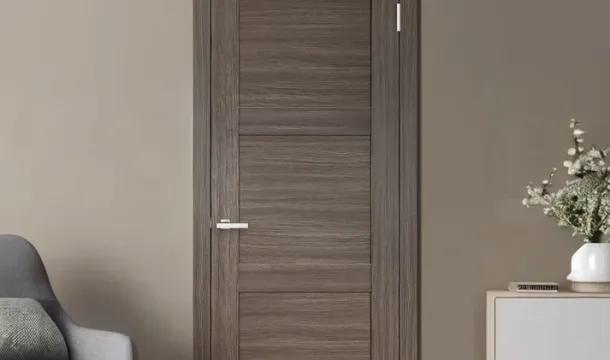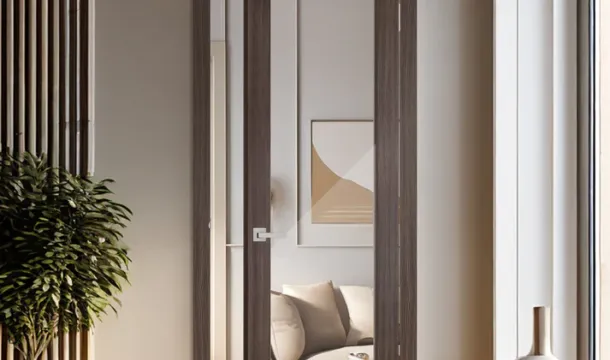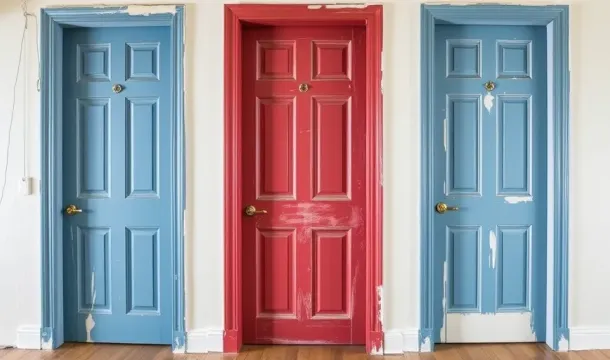Key Differences Between Traditional and Modern Interior Doors
Popular Articles
Choosing the right interior doors directly impacts the overall design and functionality of your home. Traditional doors often feature classic materials like solid wood with raised panels, intricate moldings, and ornate hardware, reflecting timeless craftsmanship. In contrast, modern doors emphasize sleek lines, minimalist styles, and innovative materials such as glass, metal, or engineered composites that align with contemporary design trends.
Functionality and features also distinguish these two door types. Traditional doors typically offer robust durability and sound insulation due to their heavier construction, while modern doors may incorporate smart technology integrations or space-saving mechanisms like sliding or pivot hinges. Recognizing these differences helps homeowners select doors that complement both aesthetic preferences and practical needs.
The evolving styles and trends in interior doors allow customization tailored to a home's architectural character. While traditional designs suit vintage or classic interiors, modern door options provide versatility for open-plan layouts and bright interiors through translucent panels or frameless constructions. Understanding these distinctions ensures informed decisions when upgrading or renovating your living spaces.
Material Choices Comparison
Traditional interior doors typically feature solid wood such as oak, mahogany, or pine, valued for durability and classic grain patterns that complement timeless home designs. These materials offer excellent sound insulation and longevity but tend to be heavier and require regular maintenance to prevent warping or cracking.
Modern interior doors often utilize engineered materials like MDF, HDF, or composite cores combined with veneers or laminates. These choices align with current design trends prioritizing sleekness and minimalism while providing resistance to moisture and temperature fluctuations. Additionally, aluminum and glass elements are integrated into modern doors to enhance light transmission and create a sense of openness within the home.
The key differences in material features impact both aesthetics and functionality: traditional wood doors emphasize natural texture and warmth, whereas modern options deliver uniform finishes and greater design flexibility. For homeowners aiming to merge classic charm with contemporary practicality, hybrid doors–combining solid wood frames with modern panels–offer an effective compromise aligned with evolving interior trends.
Design Styles Impact
Choosing between traditional and modern interior doors significantly influences the overall design language of your home. Traditional doors often feature raised panels, intricate moldings, and classic hardware, aligning with interiors that emphasize warmth, craftsmanship, and timeless aesthetics. These features enhance homes with vintage or rustic themes, contributing to a cohesive look that respects historic trends.
Modern doors prioritize clean lines, minimal ornamentation, and innovative materials such as glass inserts or metal accents. Their streamlined design complements contemporary spaces focused on openness and simplicity. Incorporating these doors reinforces a home’s modern character and highlights architectural elements without visual clutter.
The differences in door styles extend beyond appearance; they also affect spatial perception. Traditional doors tend to create defined boundaries within rooms due to their solid construction and heavier profiles. In contrast, modern doors–especially those with translucent or frameless features–promote fluidity between spaces, enhancing natural light flow and fostering an airy atmosphere.
Selecting door styles consistent with your home’s design trends ensures harmony across all elements. For homeowners aiming to preserve historical integrity or evoke cozy atmospheres, traditional doors remain the preferred choice. Meanwhile, those seeking to reflect current architectural movements will benefit from integrating modern door designs that emphasize functionality alongside aesthetic innovation.
Installation Process Variations
Modern interior doors often require precise measurements and additional hardware components compared to traditional doors. While traditional doors typically rely on standard frame sizes and straightforward hinges, modern doors may incorporate pivot systems, concealed hinges, or sliding mechanisms that demand specialized installation techniques.
The differences in installation stem from the evolving door features and styles: traditional doors usually fit into pre-existing frames with minimal adjustment, whereas modern doors frequently call for custom framing or reinforcement to accommodate unique designs and heavier materials like glass or metal composites.
Homeowners choosing modern interior doors should prepare for longer installation times due to the need for alignment of advanced hardware and integration with smart home systems, if applicable. Traditional door installations generally prioritize speed and simplicity, focusing on basic functionality without additional wiring or calibration.
Installation trends reveal that professional involvement is more common with modern doors to ensure proper sealing, smooth operation, and longevity. In contrast, many traditional door installations can be completed by skilled DIY enthusiasts using common tools.
Ultimately, understanding these installation process variations helps homeowners plan for labor costs and timelines while selecting interior door styles that align with both aesthetic preferences and practical capabilities within their homes.
Maintenance Requirements Overview
Traditional doors typically demand regular upkeep due to their natural wood composition, requiring periodic sanding, staining, or varnishing to protect against moisture and wear. This maintenance preserves the authentic texture and warmth that define classic interior styles but can be time-intensive. In contrast, modern doors often feature engineered materials like MDF, laminate, or metal finishes, which resist scratches and humidity with minimal intervention.
Cleaning traditional doors involves gentle products to avoid stripping protective coatings, while modern door surfaces allow for simple wiping with mild detergents without risking damage. Hinges and hardware on traditional doors may need more frequent lubrication because of heavier frames and intricate designs, whereas modern doors usually incorporate streamlined mechanisms that reduce friction and extend service intervals.
Surface durability varies significantly between these styles: traditional finishes are susceptible to dents and fading over time, necessitating touch-ups aligned with evolving design trends. Modern doors emphasize scratch-resistant coatings and UV stability, maintaining appearance despite frequent use in high-traffic interior spaces.
Choosing a door based on maintenance preferences means weighing the appeal of traditional aesthetic features against the practicality offered by contemporary designs. The differences in upkeep reflect broader distinctions in material technology and functional priorities within current interior door trends.
Cost Factors Breakdown
Choosing between traditional and modern interior doors significantly impacts your budget due to distinct cost components tied to materials, manufacturing, and customization.
- Material Expenses: Traditional doors often use solid hardwoods like oak or mahogany, which carry a higher base price but offer durability. Modern doors utilize engineered wood, MDF, glass panels, or metal accents that may reduce raw material costs while aligning with contemporary trends.
- Manufacturing Complexity: Traditional designs involve intricate carvings and paneling requiring skilled craftsmanship, driving labor costs upward. Modern door styles favor sleek lines and minimal detailing, enabling more streamlined production methods that lower expenses.
- Customization Levels: Traditional doors are frequently custom-ordered to match classic home styles, increasing lead times and prices. Modern doors come in a broader range of pre-designed styles and finishes suitable for mass production, offering more competitive pricing without sacrificing design appeal.
- Hardware Integration: The choice of handles, hinges, and locks varies–classic brass or bronze fixtures complement traditional doors but tend to be pricier. Modern hardware options often feature minimalist designs with cost-efficient materials like stainless steel or matte black finishes.
- Installation Costs: Traditional door frames may require additional adjustments or reinforcements due to heavier materials and older home structures. Modern doors typically weigh less and fit standard openings more easily, reducing installation time and associated fees.
The overall differences in features directly influence the final investment. Prioritize your home’s design style alongside these cost factors to select doors that balance aesthetic preferences with budget constraints effectively.
Popular Articles

Choosing the Perfect Interior Doors for Your Canadian Home

A Complete Guide to Choosing Interior Doors for Canadian Homes
